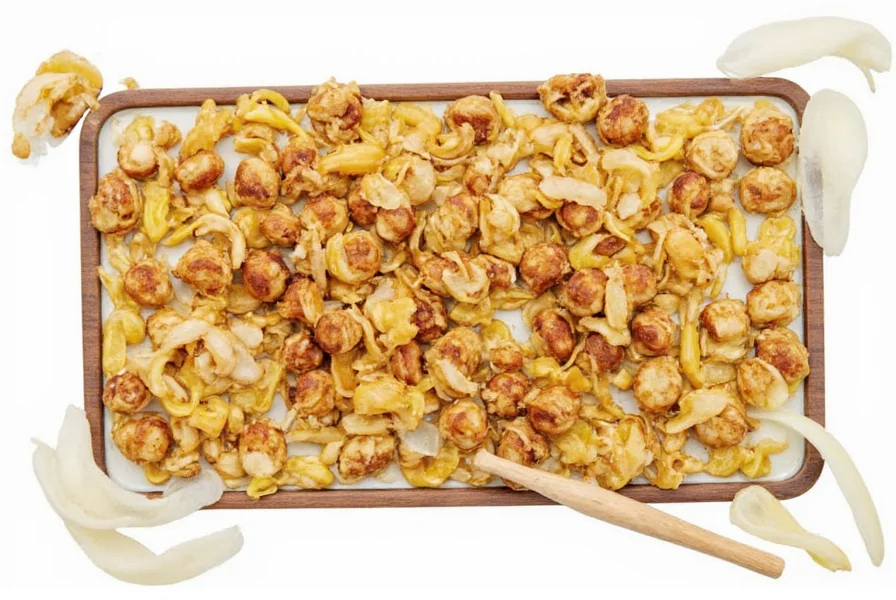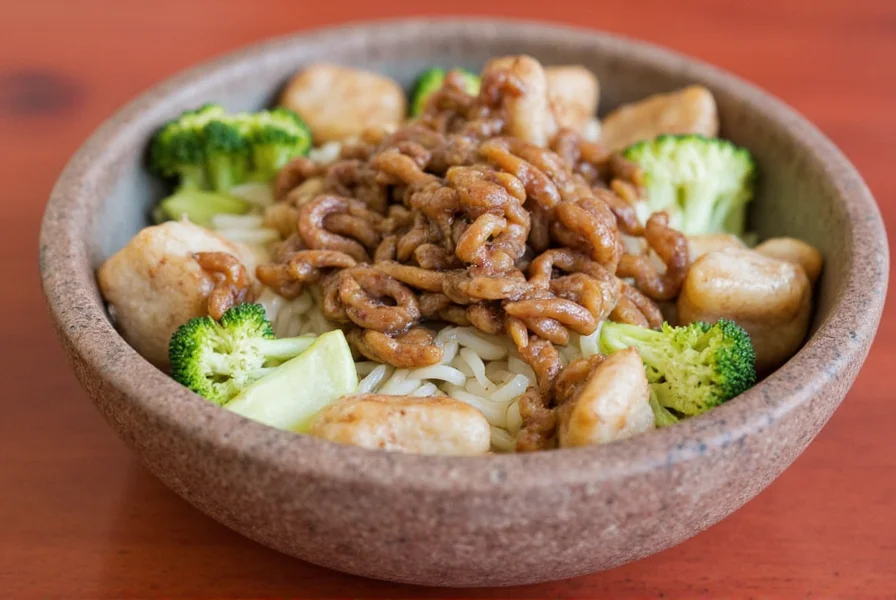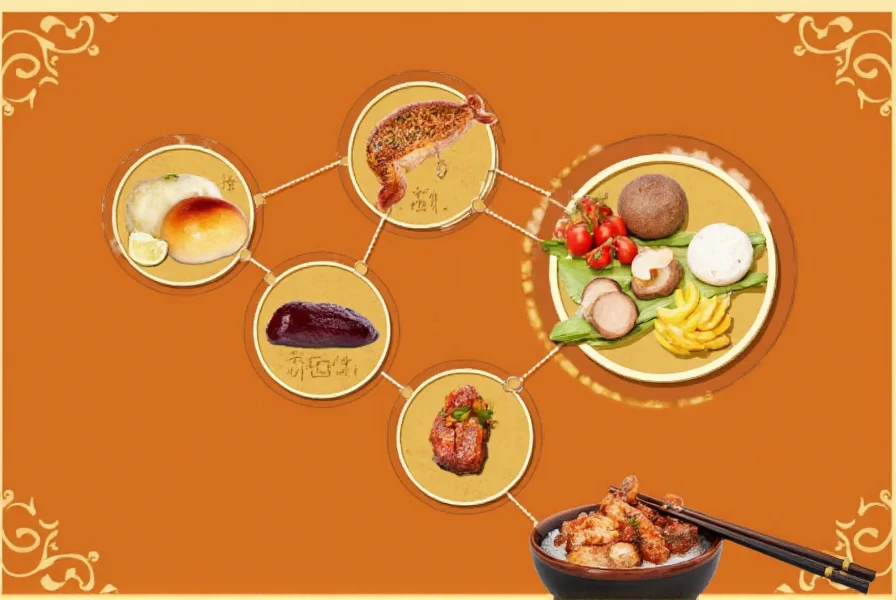What tastes umami? The answer is: tomatoes (especially sun-dried), mushrooms (shiitake being the most potent), aged cheeses (Parmesan, blue cheese), cured meats (prosciutto, bacon), fermented foods (miso, soy sauce, kimchi), seaweed (especially kombu), and meat and fish (especially slow-cooked or aged). This mysterious fifth taste is the secret behind some of the world's most satisfying dishes. In this post, we'll explore how umami works and how you can harness its power in your own kitchen — whether you're a home cook or a seasoned pro.
Table of Contents
- What Exactly Is Umami?
- Natural Sources of Umami
- How Does Umami Work on Your Tongue?
- How to Boost Flavors with Umami
- Top Umami-Enhancing Ingredients & Products
- Buying Guide: Choosing the Right Umami Ingredient
- Frequently Asked Questions About Umami
- Final Thoughts
What Exactly Is Umami?

Let's start with the basics: umami is a Japanese word meaning "essence of deliciousness." First identified by Dr. Kikunae Ikeda in 1908, umami refers to the savory, meaty flavor profile created by glutamates and nucleotides found naturally in many foods.
Unlike the other four basic tastes, umami isn't just a single sensation — it's more of a depth-enhancer. Think of it like a culinary velvet cloak wrapping around your palate, making everything feel richer and more complex.
Natural Sources of Umami

The beauty of umami lies in its natural abundance. Many everyday ingredients are packed with these savory compounds. Here are some of the top contenders:
- Tomatoes (especially sun-dried)
- Mushrooms (shiitake being the most potent)
- Aged cheeses (Parmesan, blue cheese)
- Cured meats (prosciutto, bacon)
- Fermented foods (miso, soy sauce, kimchi)
- Seaweed (especially kombu)
- Meat and fish (especially slow-cooked or aged)
| Food | Umami Compound | Best Use |
|---|---|---|
| Kombu Seaweed | L-Glutamic acid | Make dashi broth for ramen or miso soup |
| Dried Shiitake | Guanosine monophosphate (GMP) | Add to risottos, soups, or stir-fries |
| Aged Parmesan | Glutamate + Inosinate | Grate over pasta, salads, or roasted veggies |
| Soy Sauce | Free amino acids | Marinades, dressings, or as a dipping sauce |
| Tomato Paste | Natural glutamates | Boost flavor in sauces, stews, or pizzas |
How Does Umami Work on Your Tongue?

Believe it or not, humans have special taste receptors designed specifically for umami. These receptors, known as T1R1 + T1R3, bind with glutamates and nucleotides, sending a message to your brain that says, "This tastes good!"
One fascinating aspect of umami is its synergistic effect. When glutamate-rich foods are combined with those containing inosinate or guanylate, the umami flavor multiplies dramatically. For example, mixing Parmesan cheese (glutamate) with dried mushrooms (guanylate) creates an umami explosion that's greater than the sum of its parts.
How to Boost Flavors with Umami

Want to level up your cooking game? Here are some practical tips to maximize umami in your meals:
- Caramelize vegetables – Roasting tomatoes, onions, or mushrooms intensifies their natural umami.
- Use anchovies as a base – A tiny amount of mashed anchovy adds a background richness to sauces without tasting fishy.
- Add fermented products – Soy sauce, miso paste, or Worcestershire sauce can elevate any dish subtly.
- Brown proteins properly – Maillard reaction during searing releases amino acids that contribute to umami.
- Use aged ingredients – Aged cheeses, cured meats, and matured wines contain higher concentrations of flavor compounds.
- Dry-age your own meat – If you're feeling adventurous, dry-aging beef at home enhances both texture and umami.
- Try kombu when boiling grains – Infuse rice, quinoa, or barley with seaweed for a subtle savory lift.
Top Umami-Enhancing Ingredients & Products

If you're looking to bring out the big guns, here are some powerhouse ingredients and ready-made products that deliver concentrated umami flavors:
1. Miso Paste
- Features: Fermented soybean paste with a deep, earthy flavor
- Advantages: Versatile, probiotic-rich, shelf-stable
- Use Cases: Soups, marinades, glazes, salad dressings
- Target Audience: Home cooks, health-conscious eaters
- Best For: Everyday cooking and comfort food lovers
2. Worcestershire Sauce
- Features: Complex blend of vinegar, molasses, anchovies, and spices
- Advantages: Intense flavor punch in a small amount
- Use Cases: Steak sauces, Bloody Marys, marinades
- Target Audience: Bartenders, BBQ enthusiasts
- Best For: Savory cocktails and hearty mains
3. MSG (Monosodium Glutamate)
- Features: Pure glutamate in crystalline form
- Advantages: Instant umami boost without altering recipe structure
- Use Cases: Snacks, soups, restaurant-style seasoning
- Target Audience: Chefs, professional kitchens
- Best For: Quick enhancement without added moisture
4. Anchovy Paste
- Features: Concentrated anchovy flavor in spreadable form
- Advantages: No need to handle whole fish; easy to store
- Use Cases: Sauces, dressings, pizza toppings
- Target Audience: Gourmet cooks, pasta lovers
- Best For: Italian-inspired recipes needing depth
5. Mushroom Powder
- Features: Dried shiitake or porcini mushrooms ground into powder
- Advantages: Vegan-friendly, gluten-free, aromatic
- Use Cases: Seasoning rubs, broths, plant-based dishes
- Target Audience: Vegetarians, vegans, wellness chefs
- Best For: Healthy umami in vegetarian cuisine
Buying Guide: Choosing the Right Umami Ingredient

Choosing the right umami booster depends on your dietary preferences, cooking style, and flavor goals. Here's a handy guide to help you decide:
| Ingredient | Vegan | Keto | Protein-Rich | Low-Sodium Option | Best Use Case |
|---|---|---|---|---|---|
| Miso Paste | Yes | Yes | No | Check labels | Asian soups, dressings, marinades |
| Worcestershire | No (contains anchovies) | Yes | No | Look for reduced sodium | Steak sauces, cocktails |
| MSG | Yes | Yes | No | No | Seasoning blends, quick snacks |
| Anchovy Paste | No | Yes | Yes | Check brands | Pizza bases, tomato sauces |
| Mushroom Powder | Yes | Yes | No | Yes | Vegetarian broths, spice blends |
Tip: Always buy smaller quantities of specialty items like miso or mushroom powder until you find a brand you love. Some can be overpowering if used incorrectly!
Frequently Asked Questions About Umami
What foods taste umami?
Many foods naturally contain umami, including tomatoes (especially sun-dried), mushrooms (particularly shiitake), aged cheeses like Parmesan, cured meats such as prosciutto, fermented foods like miso and soy sauce, seaweed (especially kombu), and slow-cooked or aged meats and fish. These ingredients contain glutamates and nucleotides that trigger the umami taste receptors on your tongue.
What does umami taste like?
Umami is described as a savory, meaty, or brothy taste that creates a feeling of richness and complexity. It's not as easily defined as sweet, salty, sour, or bitter. Instead of a distinct flavor on its own, umami acts as a depth-enhancer that makes foods feel more satisfying and complete. Think of the deep, hard-to-describe flavor in a perfectly seared steak, aged cheese, or your grandmother's rich tomato sauce.
Is umami just MSG?
No, umami is not just MSG (monosodium glutamate). MSG is simply a concentrated form of glutamate, one of the compounds that creates umami taste. Umami occurs naturally in many foods through various compounds including glutamates and nucleotides. MSG was developed to deliver pure umami flavor, but umami itself is a fundamental taste that exists independently of MSG.
Why is umami considered a basic taste?
Umami is considered a basic taste because humans have specific taste receptors (T1R1 and T1R3) designed to detect glutamates and nucleotides. Scientific research has confirmed that umami triggers a distinct physiological response separate from sweet, salty, sour, and bitter. It was officially recognized as the fifth basic taste in the early 2000s, though it was first identified by Dr. Kikunae Ikeda in 1908.
How can I identify umami in foods?
To identify umami in foods, pay attention to savory, meaty, or brothy flavors that create a lingering, satisfying sensation. Umami often makes your mouth water slightly and creates a feeling of richness and depth. Try comparing fresh tomatoes to sun-dried tomatoes, or fresh mushrooms to dried shiitakes - the concentrated versions will have more pronounced umami. Foods that make you say "this tastes delicious but I can't quite describe why" are often high in umami.
Can vegetarians get umami flavors?
Absolutely! Vegetarians can enjoy umami through many plant-based sources including tomatoes, mushrooms (especially shiitake), seaweed (kombu), soy products (miso, soy sauce, tempeh), aged cheeses, and fermented vegetables. Mushroom powder, miso paste, and tomato paste are particularly versatile umami boosters for vegetarian and vegan cooking.
Final Thoughts

So, what tastes umami? It's not just one thing — it's a whole symphony of flavor enhancers that work together to create a mouthwatering experience. Whether you're using Parmesan on your pasta or a pinch of MSG in your popcorn, understanding umami opens up a whole new dimension of cooking.
Now that you've got the tools and knowledge, don't be afraid to experiment. Play with combinations, try out different ingredients, and trust your taste buds. After all, the magic of umami is that it makes food more enjoyable — and isn't that what cooking is all about?











 浙公网安备
33010002000092号
浙公网安备
33010002000092号 浙B2-20120091-4
浙B2-20120091-4